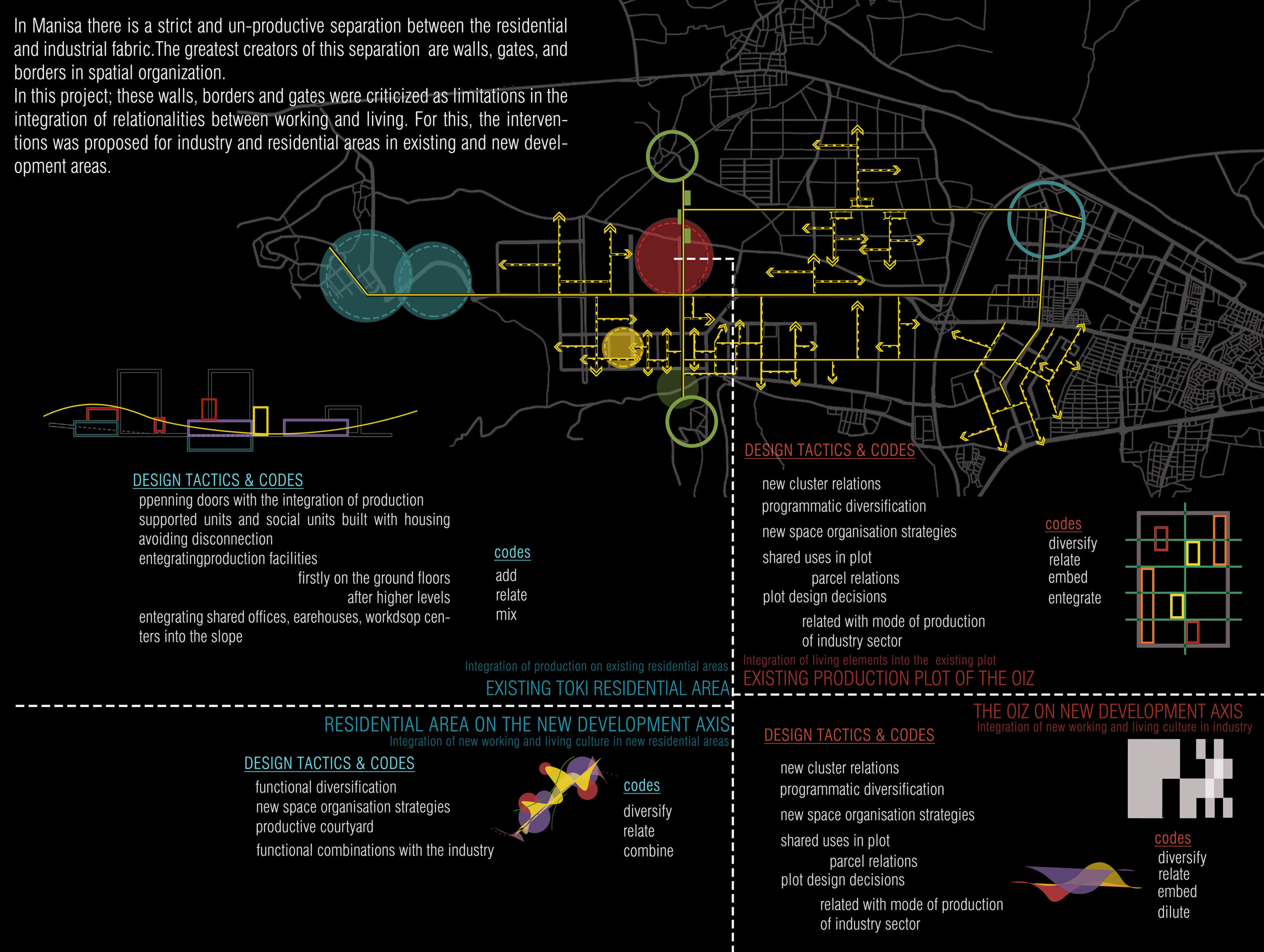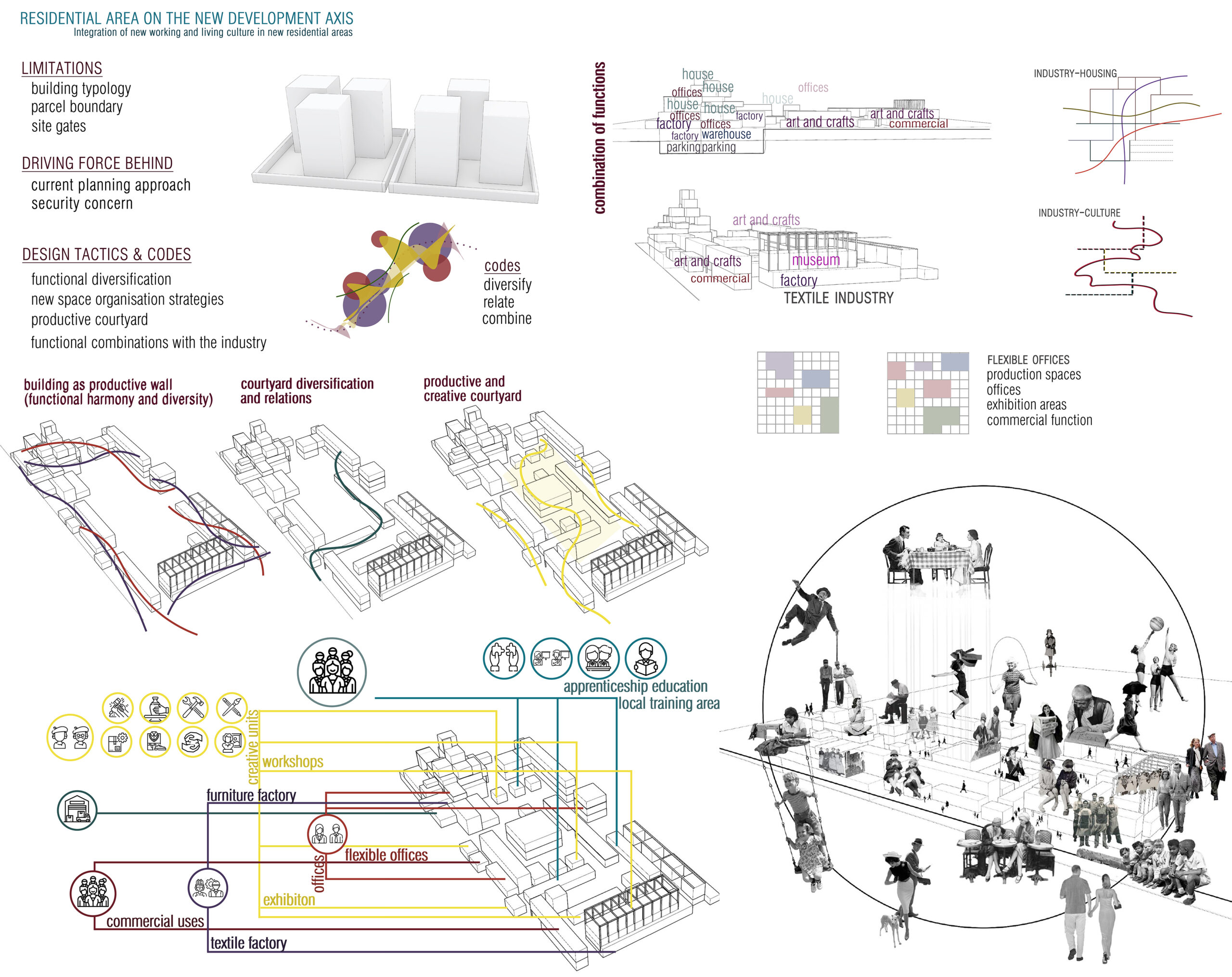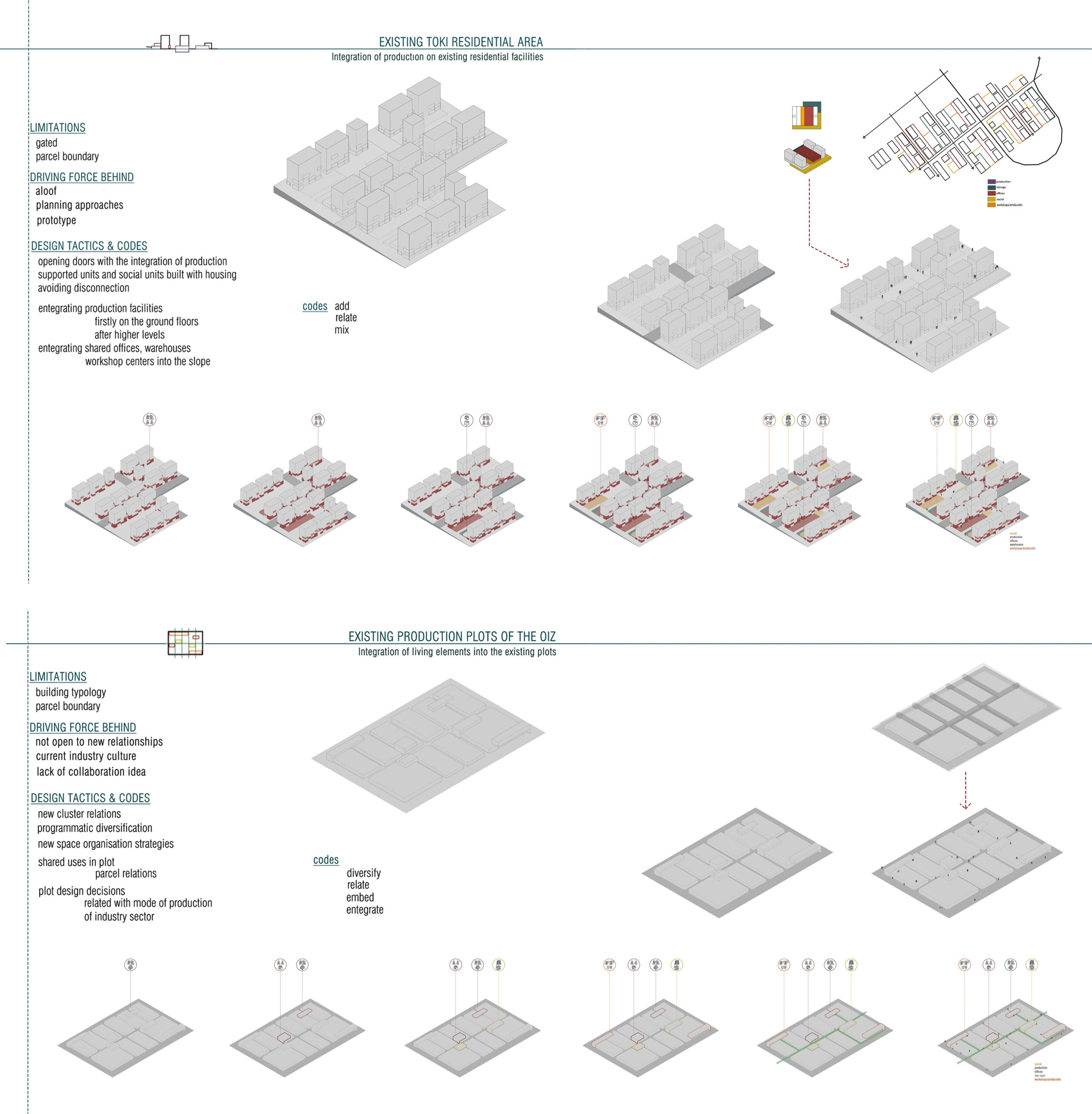‘Inside Out’: Re-productive unity of living and industrial environments
Can the industrial production activity, which is confined to the industrial zones, be opened to the outside by integrating manufactural facilities, pre- and post-production activities such as design, software, prototyping, and marketing with the living environments? Is it possible to both prevent alienation in production and ensure high production efficiency by commoning the discrete manufacturing activities in the form of ‘industrial clusters? While opening the industrial production outside the specialized regions, can we enrich the industrial program with supplementary activities like R&D, education, and recreation to improve the livability conditions within the zones?
The project constructs a ‘reverse orientation’ process between working and living spaces that form a dual structure in the context of industrial production. Accordingly, while non-manufacturing vital functions (e.g., services, education, recreation) are integrated into the fabric of the industrial zone, in residential areas, the productive programs, like product and software design, prototyping, and marketing, which are the basic elements of urban industry, are adapted into the living fabric. In this way, the mixed sociological structure in the city is provided within the industrial zones to a certain degree.
In this framework, while constructing the gradual functional transformation strategy for the selected (rural and urban) residential areas surrounding the OIZ on the block scale, the project describes a parcel-based incremental clustering process within the industrial zone. This strategic approach will enable the process to be undertaken by a large number of entrepreneurs, as well as provide the desired coherent (functional) complexity.
Elif Nur Bek | Dilşad Karakuş





